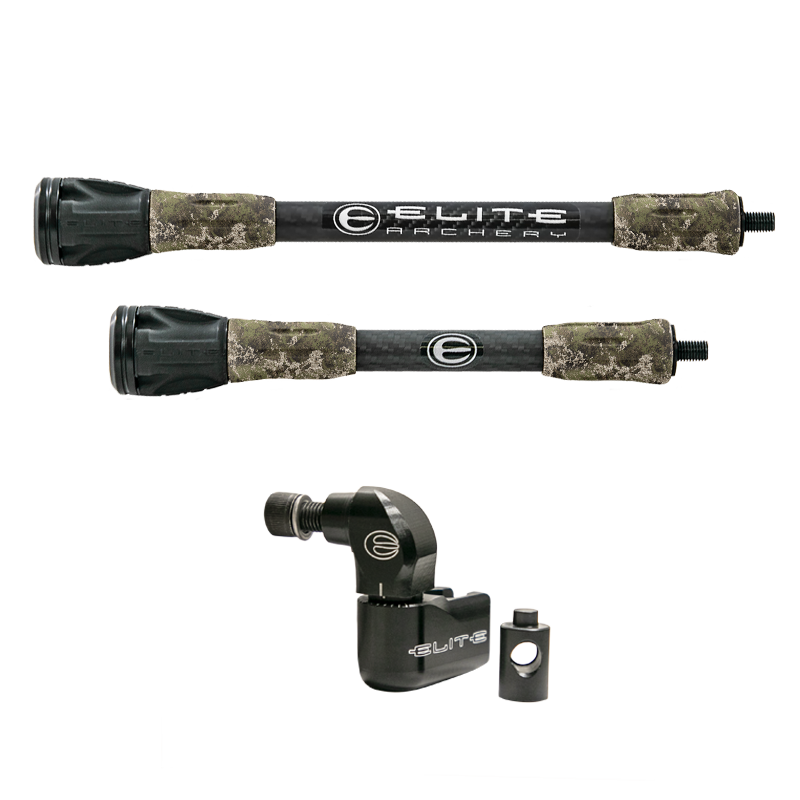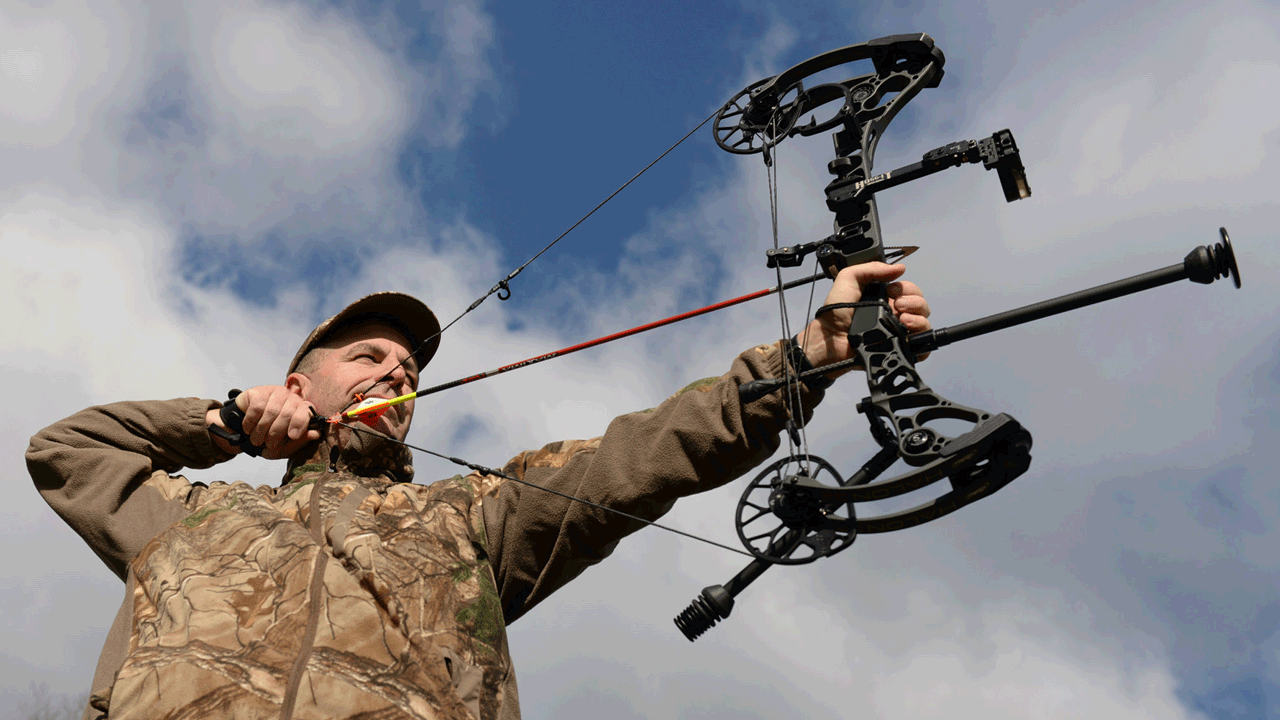Opening Accuracy: The Advantages of Using Archery Stabilizers
Opening Accuracy: The Advantages of Using Archery Stabilizers
Blog Article
Master the Art of Archery: Comprehending the Significance of a Stabilizer in Your Configuration
Whether one is an experienced archer or simply beginning their trip, the value of a stabilizer in their setup can not be overemphasized. By understanding the advantages of using a stabilizer, taking into consideration the ideal elements when choosing one, and appropriately installing and readjusting it, archers can elevate their abilities to brand-new heights.
The Function of a Stabilizer in Archery
A stabilizer plays an important role in archery by enhancing balance and minimizing resonances during the shot. When an archer attracts the bowstring and releases it, there is a transfer of energy that can trigger the bow to vibrate. These resonances can negatively influence the accuracy of the shot. A stabilizer helps to counteract these resonances by dissipating the energy and taking in.
One of the main benefits of a stabilizer is its ability to enhance equilibrium. The weight of the stabilizer aids to disperse the weight uniformly, decreasing the stress on the archer's arm and improving stability.
Along with balance, a stabilizer additionally aids to lower torque. When an archer launches the bowstring, there is an all-natural propensity for the bow to revolve in the hand. This turning, called torque, can trigger the arrowhead to veer off-course. The weight and design of a stabilizer counteract this turning, making certain a more constant and accurate shot.
Benefits of Utilizing a Stabilizer
The usage of a stabilizer in archery offers many advantages that enhance an archer's efficiency and total capturing experience. First of all, a stabilizer assists to decrease the resonances produced upon launch of the arrowhead. These vibrations can create the acquiesce torque or spin, causing unreliable shots. By soaking up and dampening these vibrations, the stabilizer enhances the security of the bow, allowing for more regular and specific shots.
Secondly, a stabilizer aids to balance the bow by including weight to the front end. This weight circulation counteracts the natural tendency of the bow to tip onward upon launch, decreasing the amount of motion and improving the archer's capacity to keep aim on target.

Finally, a stabilizer can likewise act as a shock absorber, decreasing the shock and recoil experienced upon release. This not only boosts the comfort of shooting yet likewise decreases the threat of injury or pressure on the archer's body.
Just How a Stabilizer Boosts Accuracy
Enhancing the precision of an archer's shots, a stabilizer plays a vital duty in improving overall efficiency. archery stabilizer. By including stability to the bow, a stabilizer helps minimize the undesirable movement and resonance that can occur during a shot. This decrease in motion permits the archer to maintain a constant objective, causing more constant and exact shots

Furthermore, a stabilizer assists to moisten vibrations that happen upon release. These vibrations can cause the bow to shake, affecting the arrowhead's trajectory and precision. By soaking up and dissipating these resonances, a stabilizer assists to keep the bow's stability and ensure a smooth and exact shot.
Furthermore, a stabilizer can likewise assist in balancing the weight circulation of the bow (archery stabilizer). By adding weight to the front of the bow, a stabilizer aids to stabilize the weight of devices, such as views or quivers, which may be attached to the bow. This well balanced weight distribution aids the archer keep a regulated and stable shooting placement, bring about improved precision
Aspects to Take Into Consideration When Choosing a Stabilizer
When picking a stabilizer for your bow, it is essential to consider numerous elements that will add to its overall performance and suitability for your individual shooting style. The very first element to think about is the size of the stabilizer. Stabilizers are available in different sizes, varying from brief to long. Longer stabilizers usually give more security and balance, however they can also be heavier and harder to maneuver. Shorter stabilizers, on the other hand, use much better maneuverability but might sacrifice some security.
One more factor to take into consideration is the weight of the stabilizer. The weight of the stabilizer can impact the equilibrium of your bow.
Some stabilizers have adjustable attributes, such as flexible length or flexible weights, which enable you to customize the stabilizer to your specific demands. Carbon fiber stabilizers are light-weight and resilient, while aluminum stabilizers offer a balance in between weight and strength.
Different stabilizers might work about his better for specific shooting styles, such as target shooting or searching. It is a good idea to seek advice from with seasoned archers or specialists to figure out which stabilizer will best suit your individual demands.
Tips for Effectively Readjusting a stabilizer and setting up
Proper installation and change of a stabilizer is critical for optimizing its efficiency and making sure optimum shooting precision. When mounting a stabilizer, it is crucial to follow a couple of key actions to guarantee its performance. First, determine the appropriate size of the stabilizer based on your shooting design and preferences. Longer stabilizers give more stability but can be much less manoeuvrable, while shorter stabilizers provide boosted ability to move yet might compromise stability. Attach the stabilizer to the bow using the given installing equipment as soon as you have selected the ideal length. Guarantee that the stabilizer is securely secured and aligned with the bow's riser.
After setting up the stabilizer, it is needed to make adjustments to achieve the wanted equilibrium and shot uniformity. Begin by readjusting the weight distribution along the stabilizer. In addition, think about adjusting the angle of the stabilizer to tweak the shot.

Conclusion
To conclude, a stabilizer plays a crucial role in archery by improving precision and reducing bow torque. browse around these guys By adding weight to the bow, it helps to stabilize and stabilize the shot. When choosing a stabilizer, elements such as weight, product, and size must be taken into consideration to fulfill private needs. Proper installation and adjustment of the stabilizer are additionally crucial for optimum efficiency. Understanding making use of a stabilizer can considerably improve the archer's skill and precision.
In addition, a stabilizer can likewise aid in balancing the weight circulation of the bow. By adding weight to the front of the bow, a stabilizer assists to stabilize the weight of accessories, such as quivers or sights, which might be attached to the bow. Some stabilizers have flexible functions, such as flexible size or adjustable weights, which allow you to customize the stabilizer to your details demands. Carbon fiber stabilizers are sturdy and light-weight, while aluminum stabilizers use a balance in between weight and strength.
Longer stabilizers offer even more stability but can be less maneuverable, while shorter stabilizers supply increased maneuverability yet may sacrifice stability.
Report this page